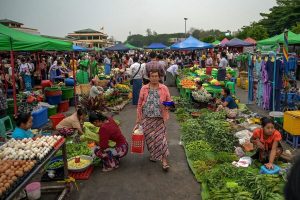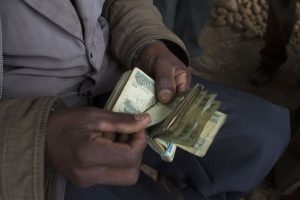Stage set for growth resurgence in Latin America
After a concerted lurch to the left, Latin America appears to be drifting back to the political center—potentially drawing interest from foreign investors, writes José Martinez Sanguinetti, who manages a $3.5 billion global portfolio as chief investment officer at Rimac Seguros.

Brazil’s President Lula, pictured at a gathering of Brazil's indigenous people, is trying to balance left and right in his effort to shore up the country’s finances. Photo: Reuters via BBC
Recent political developments in Brazil, Chile, Peru and Colombia could be the beginning of a new trend and markets seem to understand it that way. In Chile, a left-wing Constitution was rejected last year and last week a new right-wing Constitutional Assembly was elected. This, and the fact that the powers of the new Assembly to modify the existing constitution have been reduced by Congress suggest that a more market- and investor-friendly environment is on the cards.
In Brazil, President Luis Inácio Lula de Silva seems to be trying to balance the leftist rhetoric that brought him back to power with a firm determination to restore equilibrium to the country´s public finances. In Colombia, left-wing President Gustavo Petro is losing support in congress while in Peru, left-wing Pedro Castillo was replaced by his vice president, who has obtained the backing of a coalition of center-to-right parties.
The political reversal in the region is coinciding with strengthening growth in China, its main trading partner and one of its most important investors. Its growth expectations are also boosted by the fact that emerging economies are forecast to generate some two-thirds of global economic growth over the next few decades, and Latin America is a region rich in natural resources and young people.
If the region’s economies do return to strong growth it will be a welcome respite from a multi-decade slump. Although long-term investors have enjoyed strong returns—since June 1999, US dollar returns registered by the Mexican, the Brazilian and the Chilean stock markets have beaten both the S&P 500 and the Chinese Shanghai Composite Indexes—the region’s GDP grew just 2.3% per year on average over the past 40 years. From 2010 to 2020, growth averaged 1% per year.
Escaping the stagnation trap
As a result, there is a growing consensus Latin America it has fallen into a long term “stagnation trap.” To put it in relative terms, over the past four decades, both emerging Asia and Africa grew nearly twice as much as Latin America. The only region Latin America has beaten in terms of growth over that period is Europe; even developed North America grew faster.
In the process, Latin America’s convergence with the income levels of developed nations has reversed.
Even the region’s star economies—Mexico, Chile and Brazil—have struggled with slow growth recently, despite having notched up an average of 2.2%, 4.8% and 3.8% per year respectively between 2000 and 2008. With some variations of degree, this is the story of every Latin American nation in the 21st century.
A similar picture has been unfolding this year. Since the beginning of 2023, Latin American stock markets have been outperforming their counterparts around the world even though the combination of higher interest rates, an impending recession in the developed world and political instability have dragged on the economic performance of the region.
Political instability has been particularly prevalent in a region where relatively young democracies repeatedly experience sharp swings between left and right and has contributed to a lack of policymaking continuity. The most recent example of this is Ecuadorian President Guillermo Lasso’s decision to shut down an opposed Congress in order to avoid impeachment. The market-friendly leader was elected just two years ago and was accused of embezzlement by a pro-left congress majority.
Coming just days after Lasso’s administration sealed a free-trade agreement with China, it remains to be seen whether the decision will undermine efforts to tackle some of Ecuador’s persistent economic problems. Under Ecuadorian law, new congressional and presidential elections will have to take place within six months.
Persistently sluggish growth and political instability have also weighed on investor sentiment—a crucial factor for Latin America, many of whose economies rely on inward investment to offset steady foreign exchange flows caused by trade imbalances.
Hard-currency flows
Although Latin American countries are large producers and exporters of commodities, the inflows of hard currency generated by trade are more than offset by large imports of services and the money sent abroad to pay interest on foreign debt and profits on foreign investments. Overall, the region falls short of hard-currency inflows every year by an amount equivalent to 1.5%-2.0% of GDP on average.
The inability to generate sufficient foreign currency inflows has been a major impediment for the region to consolidate growth. However, for most of the past two decades, its recurring current account deficit was offset by inflows of foreign investment and, as a result, Latin America has been accumulating foreign currency reserves.
According to the IMF, the region’s foreign currency reserves tripled from a level equivalent to four months of imports in 1988 to a peak of eleven months in 2020. However, this dependence on foreign capital inflows makes the region vulnerable to reversals of investor sentiment.
In recent years, foreign investors have been discouraged from venturing into the region by social unrest and political instability combined with the effects of the pandemic and, later, with higher interest rates countries used to try to rein in inflation.
The impact has been stark: Foreign direct investment as a percentage of GDP has fallen from the 5.1% peak of 2015 to the current 3.4%.
But investor sentiment can change in both directions. If market conditions improve and growth prospects continue to develop, the restless tide of FDI could again wash up on Latin America’s shores. And if Chile and Brazil prove to be bellwethers for the region, those conditions might be about to arrive.
Jose Pedro Martinez Sanguinetti is chief investment officer at Rimac Seguros.
Research on this story was conducted by Lorenzo Antonio Martinez Roveda.






